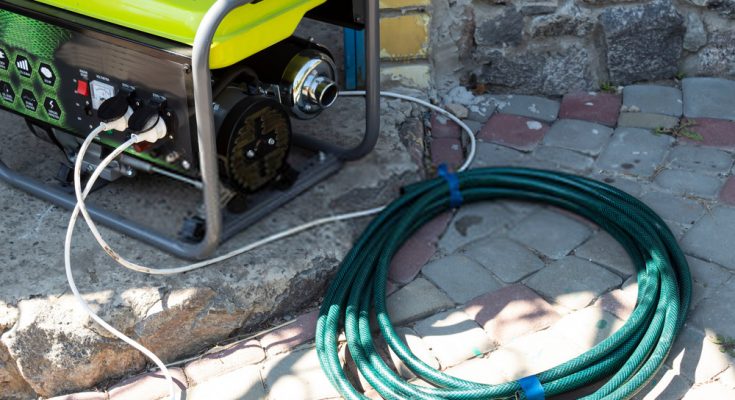How Do Generators Produce Electricity? The push for clean energy is a high priority around the world and the first step is to learn how do generators produce electricity. Several types of generators produce power, but they all use the same basic concept of power generation.
First, a little history on the process of producing electrical generation. Between 1821 and 1831, a British scientist, Michael Faraday, discovered how to convert mechanical energy into usable electricity.
He also found out that when a conductor, such as a copper wire, was moved along a magnetic field, the electrical current would flow through the conductive wire.
He continued his studies of the magnetic field around the wire and later invented electromagnetic rotary devices which evolved into what we now know today as electric motors and generators. The difference between a motor and a generator is that a motor runs off of energy and a generator produces energy.
However, there is a misunderstanding of how do generators produce electricity in that they don’t necessarily create the electricity; they simply appear to create electricity. Generators essentially “push” electrons that already exist in wire windings of the generator to external loads on the other end of conductors (such as an electronic device).
In the modern world, how generators produce electricity is quite amazing to the point where they can now produce electricity more inexpensively and with little to no hazardous by-products produced during the creation of the electricity. Though these great methods exist, only a small percentage (about 2.8%) of the power generated in the world is through the safe methods of producing energy.
Here are some of the types of electricity producing generators out there that pollute the environment in one way or another:
1. Coal Power Plant
Plants burn coal to create steam that turns a turbine which spins the rotor in massive generators. These plants produce one of the highest levels of pollutants around the world including carbon dioxide, nitrogen dioxide, and sulfur dioxide (which produce acid rain). There are also large levels of mercury that are emitted that can be absorbed by fish and threaten the food chain.
2. Petroleum Fuel Power Plant
Plants burn fossil fuels to create steam that turns a turbine which spins the rotor in massive generators. This method is just as hazardous as coal, similarly causing high levels of toxic gasses to enter the atmosphere.
3. Nuclear Power Plant
Plants use uranium to generate power much like the previous two methods. Though less toxins enter the atmosphere during the process, the waste produced after the fuel is expended is very toxic to the environment and very difficult to dispose of.
Though there are still several energy sources in use today that produce most of the world’s pollution (such as those listed above), there is a determined drive to create green energy sources that will lower the overall pollution into the atmosphere.
In fact, there is a little known magnetic generator that can actually produce its own electricity without the use of environment killing fuels or mechanical influence.
The basic principle of how generators produce electricity is to spin or move a conductive object continuously through electromagnetic lines of force produced by oppositely polarized magnets surrounding the moving object. The larger the magnets used determines how much electricity will be produced.
Remember, an electric generator is a device that converts mechanical energy to electrical energy. It’s very similar to a water pump in that the pump “pushes” water through the pipes. The magnets of a generators are exciting or “pushing” the electrons naturally found inside conductors along the conductor (pipe) to the load (electronic device).
To complete the concept of how do generators produce electricity, you must understand the difference of potential. This difference in potential (known as positive and negative voltage) is created when the electrons are excited on one end of the conductor. This creates a virtual movement through the conductor to the load (your television, computer, or other electronic device).
Understanding how generators produce electricity will help you realize the need for more efficient and less toxic ways of producing power.

